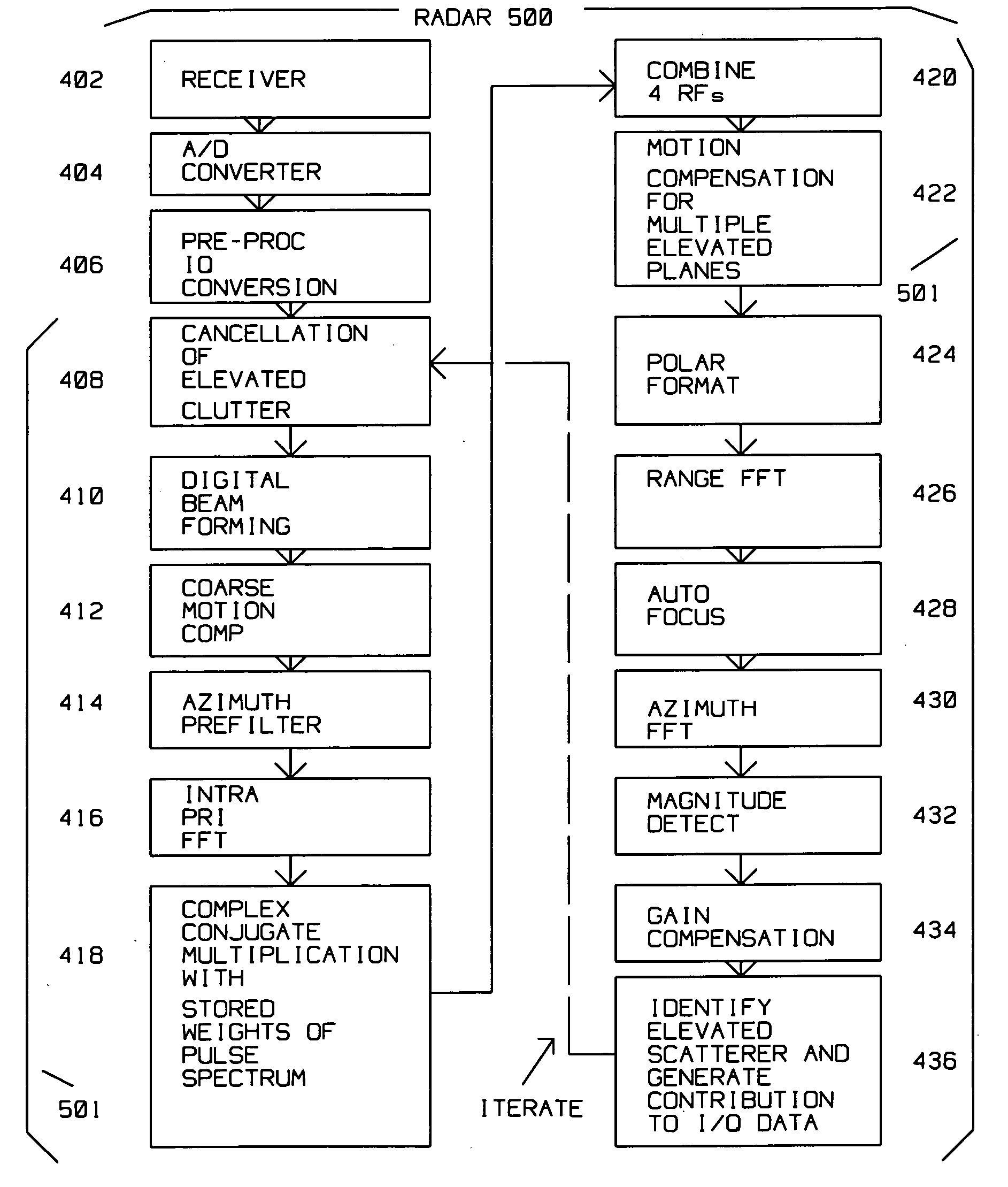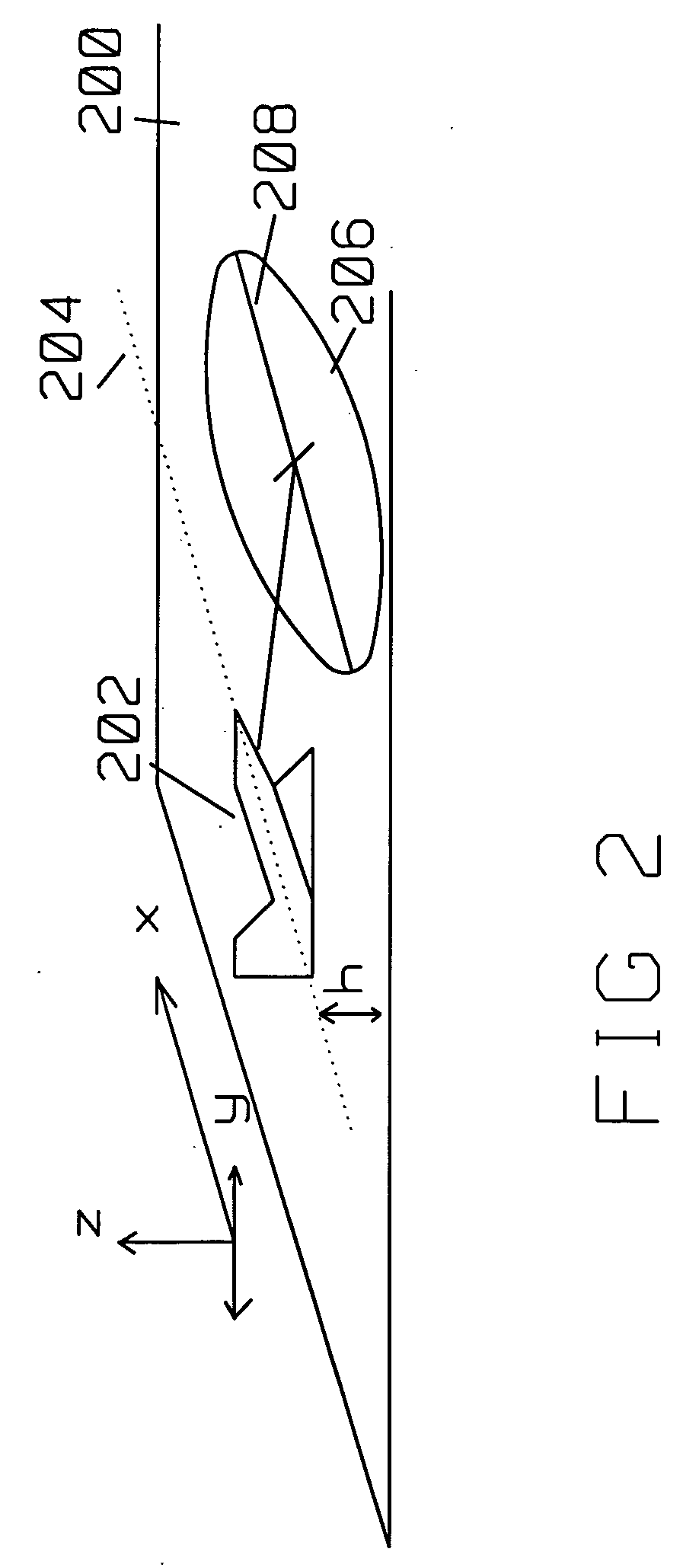Technique for cancellation of elevated clutter for the detection of fixed and ground moving targets under trees
a technology of elevated clutter and detection of fixed and ground moving targets, applied in the field of above ground clutter cancellation for use with synthetic aperture radar imaging, can solve the problems of inability to reliably detect targets in satellite imaging, and failure of vhf and uhf approaches in many instances, and achieve the effect of facilitating tracking of moving targets
- Summary
- Abstract
- Description
- Claims
- Application Information
AI Technical Summary
Benefits of technology
Problems solved by technology
Method used
Image
Examples
embodiment
PREFERRED EMBODIMENT
[0035]FIG. 4 shows method steps of a preferred embodiment of the invention. Receiver 402 receives radar returns reflected from the combination of target 313 as well as elevated clutter 301, 303 and 305. 8 channels are used for a 6 KM swath. A / D converter 404 digitizes the received radar returns at a rate corresponding to the desired range bin size. An 80 MHz rate (real), 12 bits / channel is utilized to produce a 2 K range pixel by 2 K cross range pixel map with 4 meter resolution and 1 meter azimuth resolution in 60 seconds.
[0036] The digital values from A / D converter 404 become the I and Q complex values defining the phase of the return. Preprocessor I / Q conversion 406 uses a weight of 16, skip 4, real processing using a 14 MHz pass band, 20 MHz output sample rate, generating 2 bytes for 1 and 2 bytes for Q. The output is 20 Mega-complex words at 4 bytes per word per second, assuming a 50 percent margin. SAR PRF is selected to eliminate sidelobe foldovers.
[0037...
PUM
 Login to View More
Login to View More Abstract
Description
Claims
Application Information
 Login to View More
Login to View More - R&D
- Intellectual Property
- Life Sciences
- Materials
- Tech Scout
- Unparalleled Data Quality
- Higher Quality Content
- 60% Fewer Hallucinations
Browse by: Latest US Patents, China's latest patents, Technical Efficacy Thesaurus, Application Domain, Technology Topic, Popular Technical Reports.
© 2025 PatSnap. All rights reserved.Legal|Privacy policy|Modern Slavery Act Transparency Statement|Sitemap|About US| Contact US: help@patsnap.com



